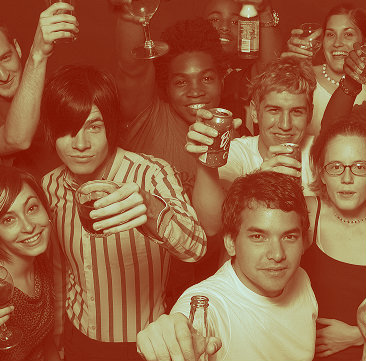How Has Alcohol Use Among Young Teens Changed Over Time?
Alcohol consumption is illegal for all teenagers in the U.S. Despite this fact, significant numbers of teenagers drink, and therefore expose themselves to a range of health risks and social problems of alcohol. In a study published in October 2013 in the Journal of Child & Adolescent Substance Abuse, researchers from the Pacific Institute for Research and Evaluation looked at the way young, alcohol-consuming teenagers alter their drinking patterns as they grow older. These researchers found that most young teens manage to avoid any increases in alcohol consumption over time, while a small but significant minority of young teens experience either moderate or heavy increases in their consumption levels.
Alcohol Consumption Rates In Young Teens
 In collaboration with the University of Michigan, the National Institute on Drug Abuse tracks American teenagers’ level of involvement in substance use with an annual survey project called Monitoring the Future. According to results compiled from the 2012 version of this project, roughly 16 percent of all U.S. eighth graders consume alcohol at least once monthly. This rate follows a downward trend that first began in the mid-1990s.
In collaboration with the University of Michigan, the National Institute on Drug Abuse tracks American teenagers’ level of involvement in substance use with an annual survey project called Monitoring the Future. According to results compiled from the 2012 version of this project, roughly 16 percent of all U.S. eighth graders consume alcohol at least once monthly. This rate follows a downward trend that first began in the mid-1990s.
Figures gathered from Monitoring the Future also indicate that roughly 6 to 7 percent of all eighth graders in the U.S. participate in a dangerous form of consumption called binge drinking in any given two-week period. Binge drinking gets its name because participants binge on enough alcohol (typically, five drinks or more for boys and four drinks or more for girls) to become legally drunk in two hours or less.
Risky Behaviors Associated With Early Alcohol Consumption
Alcohol consumption has a strongly negative impact on teenagers, especially young teenagers below the age of 14, the National Institute on Alcohol Abuse and Alcoholism reports. Examples of the risks associated with drinking at this early age include higher rates of involvement in car crashes and other accidents, higher risks for homicide and suicide, higher rates for victimization in violent criminal acts such as assaults and rapes, increased chances of participation in disruptive conduct while in school, increased chances for poor academic results, an earlier onset of participation in sexual activity and increased risks for the practice of unsafe sex.
In addition, teen boys and girls who drink before the age of 14 tend to participate in binge drinking rather than moderate alcohol consumption. Critically, they also become alcoholics fully four times more frequently than people who don’t drink until they reach legal age.
Changes In Consumption Over Time
In the study published in the Journal of Child & Adolescent Substance Abuse, the Pacific Institute researchers looked at the ways in which young teenagers change their alcohol intake patterns as they grow up. The researchers also looked at the factors that help predict an increase in alcohol consumption among young teens. They undertook their project because only a few prior research groups had examined drinking patterns in this particular age group. All told, the study included 5,903 middle school teens. The researchers began tracking these teens when they were sixth graders and continued to track them through the eighth grade.
After completing the study’s primary phase, the researchers found that there are four emerging patterns of alcohol intake in middle school teenagers. Slightly less than 50 percent of all teens in this age group avoid drinking altogether or only drink on fairly rare occasion. Slightly more than 29 percent of all middle school teens initiate experimental alcohol use and continue to drink, but only increase their consumption levels to a minor extent over time. Fifteen percent of all middle schoolers start drinking significantly earlier than their alcohol-using peers, but still manage to keep their intake levels low. Slightly more than 6 percent of all children in this age group initiate alcohol use, and then fairly quickly begin consuming enough alcohol to rank as “heavy” drinkers.
Underlying Factors Of Teen Alcohol Use
The researchers concluded that the single biggest factor in forming any given young teen’s alcohol use pattern is his or her level of belief in the ability to control his or her rate of alcohol consumption. Young teens who believe they can control their drinking-related behaviors tend to do so, while those who don’t believe they can control their drinking tend to experience a spike in intake. Other factors identified as contributors to a young teenager’s alcohol intake pattern include the relative level of peer pressure he or she experiences for or against drinking, as well as the relative level of positive or negative feelings he or she has toward the effects and benefits of drinking.
Learn More About Detoxing From Alcohol And Gain Your Life Back!



